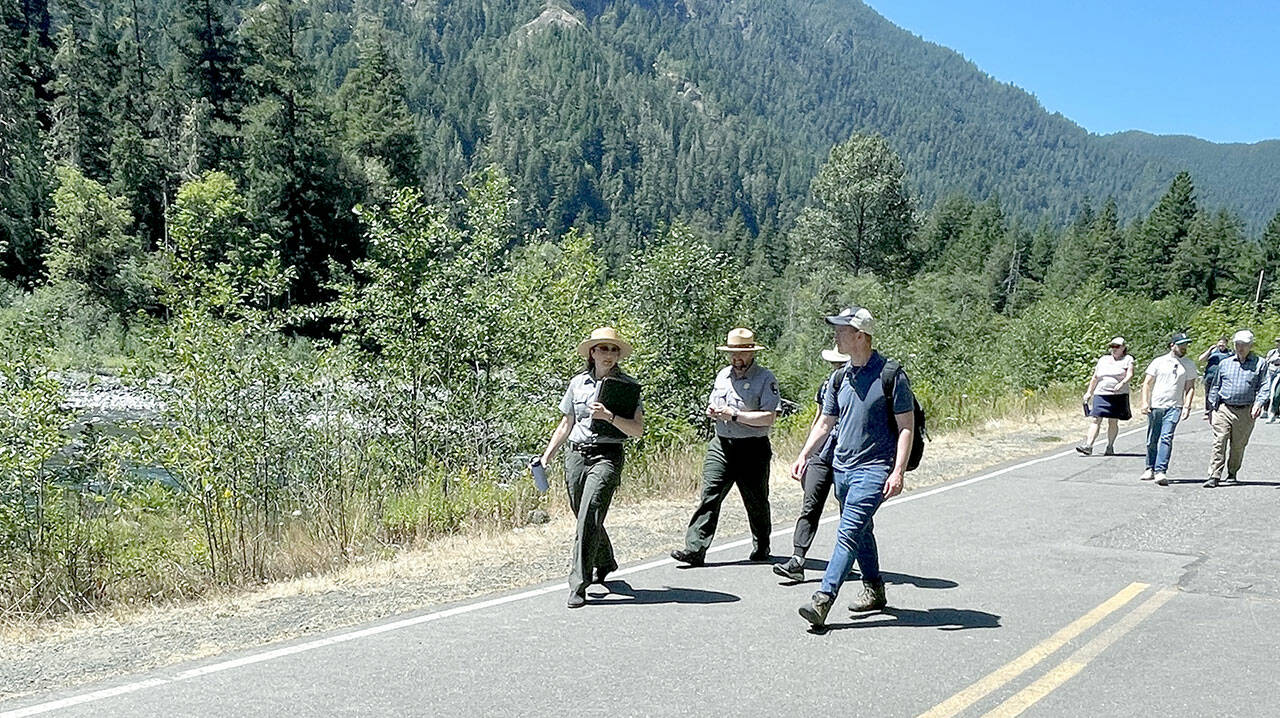Rebuilding the Hurricane Ridge Day Lodge destroyed by fire last year is still a long way off, but securing $80 million it is estimated to cost could be a little bit closer.
U.S. Rep. Derek Kilmer said on July 15 that any funding most likely would come through a disaster supplement, like the kind the $4 billion in aid the White House recently requested from Congress to pay for things like rebuilding Baltimore’s Francis Scott Key Bridge.
“This is the type of thing that could be included in it,” Kilmer said.
“Sen. (Patty) Murray has spoken about the importance of it, Sen. (Maria) Cantwell has spoken about the importance of it, and I’ve spoken about the importance of it. So, hopefully, that’s something we can get done and there will be disaster supplement and that will be in it.”
Kilmer had the opportunity to advocate for funding to rebuild the lodge when seven members of the U.S. House of Representatives visited Olympic National Park on a climate change tour led by Kilmer, D-Gig Harbor, and Mike Quigley, a Democrat who represents Illinois’ 5th District and co-chairs the Sustainable Energy and Environment Coalition (SEEC), 98 House members who work to advance policies addressing clean energy, climate change, protecting air, water and the environment.
While the official purpose of the visit for members of the SEEC was to learn about how climactic change is impacting the park, Kilmer and Olympic National Park Superintendent Sula Jacobs stressed the importance of replacing the lodge, which was destroyed on May 7, 2023.
Speaking against the site of former lodge, now a barren cement slab surrounded by a cyclone fence, Jacobs emphasized the great affection the community had for the lodge and the challenges of the project.
“This is a very difficult spot, but it’s also a very important spot, and that makes everything we do difficult but also means we have to do it correctly,” Jacobs said.
“We have to go through three tunnels to get here, which means no pre-fab. There’s a very short construction season.”
An interim design has been produced, but there is no timeline or other details about construction.
Olympic National Park was Quigley’s ninth climate change tour.
He said national parks are ideal places for illustrating the effects of changes related to climate because they represent a wide variety of ecosystems, from peat soil Everglades National Park in Florida drying out to more frequent mountain pine beetle outbreaks in Colorado’s Rocky Mountain National Park.
“The thread of climate change goes through our national parks,” Quigley said. “Everyone loves them, they’re found everywhere and they’re important.”
Starting with Rocky Mountain National Park in 2017 and Everglades National Park the following year, Quigley has led SEEC members on visits to Indiana Dunes, Yellowstone, Shenandoah, Acadia, Yosemite and Denali national parks.
Kilmer had encouraged Quigley to include Olympic National Park on his climate change tour.
“The Olympic National Park is a national park, it is a treasure for the United States of America,” Kilmer said. “And when the park has challenges, it’s not just a challenge for people in Clallam County or Jefferson or Grays Harbor County, it’s a challenge for America to step up. It’s everybody’s park.”
On Day One of their two-day tour of the park, House members learned about its shrinking snowpack from climate ecologist Bill Baccus, the status of birds in the park from Scott Gremel; how the Elwha River had responded to removal of its dams in 2012 and 2014 from fisheries biologists Sam Brenkman and Pat Crain, and the increasing frequency and intensity of wildfires from Interagency Fire Officer Jeff Bortner.
“The fire season is starting earlier,” Bortner said. “There is above average temperatures and lower than usual precipitation figures.”
Last September’s Delabarre Fire was the largest fire in the park’s history, burning about 4,200 acres in 30 hours.
The legislators’ July 16 itinerary included visits to Lake Crescent, Mora and Rialto Beach.



